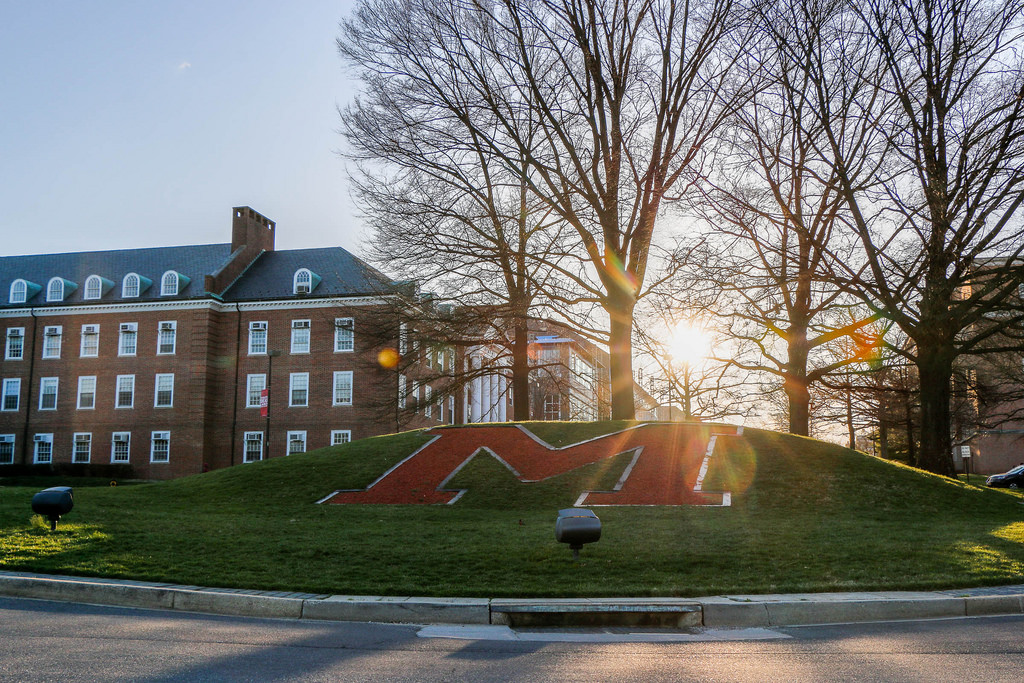Multidisciplinary research into COVID-19 and pandemics. AI and medicine. VR and neuroscience.
These are a few areas of collaboration between researchers that span the University of Maryland‘s two campuses in Baltimore and College Park. Now, it’s all being recognized as part of a single university that’s among the top destinations for higher education research and development dollars in the country.
For Fiscal Year 2019, the University of Maryland joined perennial nationwide leader Johns Hopkins among the top 20 in the National Science Foundation’s Higher Education Research and Development (HERD) ranking.
With just shy of $1.1 billion in expenditures, the University of Maryland ranked 14th among all universities, and eighth among public institutions.
It’s the highest-ever ranking for the University of Maryland, and a big jump from the FY 18 rankings that had University of Maryland College Park at #47 and University of Maryland, Baltimore at #55. The University of Maryland is also now one of 19 universities to cross the billion-dollar mark in attracting research funding.
The reason for the change? Partnership. This year, the two campuses were reported as one university in the rankings for the first time. The act of joining two research centers that already share a name isn’t unprecedented. In fact, Johns Hopkins has led the rankings by huge margins in recent years in part because it includes expenditures of the Laurel-based Applied Physics Lab alongside its Baltimore campuses.
This move up the rankings, however, was unique because it was the result of a years-long process that involved acts of the state legislature to bring the research enterprises under one figurative roof.
Thirty miles and two beltways apart, the campuses are two parts of a whole in major research university terms. College Park has the undergraduate programs, and is home to a dozen schools like engineering, computer science, business and more. The downtown Baltimore campus, meanwhile, has the medical school and is home to graduate programs, as well as professional programs in nursing, dentistry, law and human services.
“You don’t have a lot of overlap. You have a lot of great opportunities for intersecting and doing something better together,” Laurie E. Locascio, the university’s VP of research, told Technical.ly. “The strengths, the capabilities and resources that each one of these partners brings to the table is very unique.”
While there has long been recognition of this potential — including its potential to boost rankings — bringing it to reality didn’t happen overnight. Planning to explore the combination started more than a decade ago. Over the years, the idea of a more complete merger of the two universities was explored multiple times. But ultimately it was the research enterprises that became most intertwined, signaling that innovation was the area where the stakeholders found the firmest common ground. The process was encouraged along by former Maryland Senate President Thomas V. Mike Miller Jr., the titan of Maryland politics who passed away in December.
University System of Maryland President Jay Perman told legislators last week that it was Miller who “exhorted” the two campuses to join together more closely, and Perman got a chance to share the news — then under embargo — with Miller prior to his passing.
“Mike’s reaction? ‘Praise the lord,'” said Perman.
He championed a move back in 2012 to create the initial collaboration, dubbed MPowering the State. It was done with an eye toward preparing students for a more innovative society, and make it easier for researchers at the two universities to work together.
Among the initiatives that was created then: UM Ventures, the commercialization arm that works across both campuses to license intellectual property that emerges from that research and help the underlying discoveries spin out into startups.
Then, in 2016, this collaboration was formalized through a law called the University of Maryland Strategic Partnership Act, sponsored by now-Senate President Bill Ferguson (D, Baltimore City) and allowed to become law by Gov. Larry Hogan. This also allowed the universities to combine research leadership, and Locascio was hired to lead as VP of research in 2018.
Locascio said the framework in the law created “runway” for the two campuses to build more cooperation and trust as it built over the last four years toward this formally recognized combination in the eyes of the federal government. And now there’s facilitation happening, from seed grants to efforts toward building teams in an organic way that encourage working together.
For a prime example over the last year, leaders pointed to collaborations during the COVID-19 pandemic that have spanned the campuses. The efforts bring together medical experts in Baltimore with technologists, public health experts and biologists in College Park.
So what does it mean for Maryland as a whole? The higher ranking and 10-figure dollar amount surely can grab attention for the state, but it’s also worth considering the impact of that research, especially on the local economy. Locascio said the research funding always has an outcome in mind, whether it’s publishing, informing policy or the kind of patents that can lead to a new company.
“These dollars we attract provide meaningful salary to our people,” University System of Maryland Chancellor Jay Perman said at a state legislative event last week. “They make jobs. They attract the very kind of distinguished scientists and scholars that want to be a part of us and in turn grow our prowess further.”
For a local tech community, it’s also worth thinking about what R&D funding means to its ability to develop new companies. There’s a reason that the equation for startup ecosystems often includes a major university. The clustering around those institutions has been spreading over the last 10 years, as well, as the University of Maryland BioPark in Baltimore and the Discovery District giving software and computing startups space in College Park.
As we’ve reported, academic research is part of what drives the innovation economy in the state. And a willingness to work together is a big part of what will help it grow.







